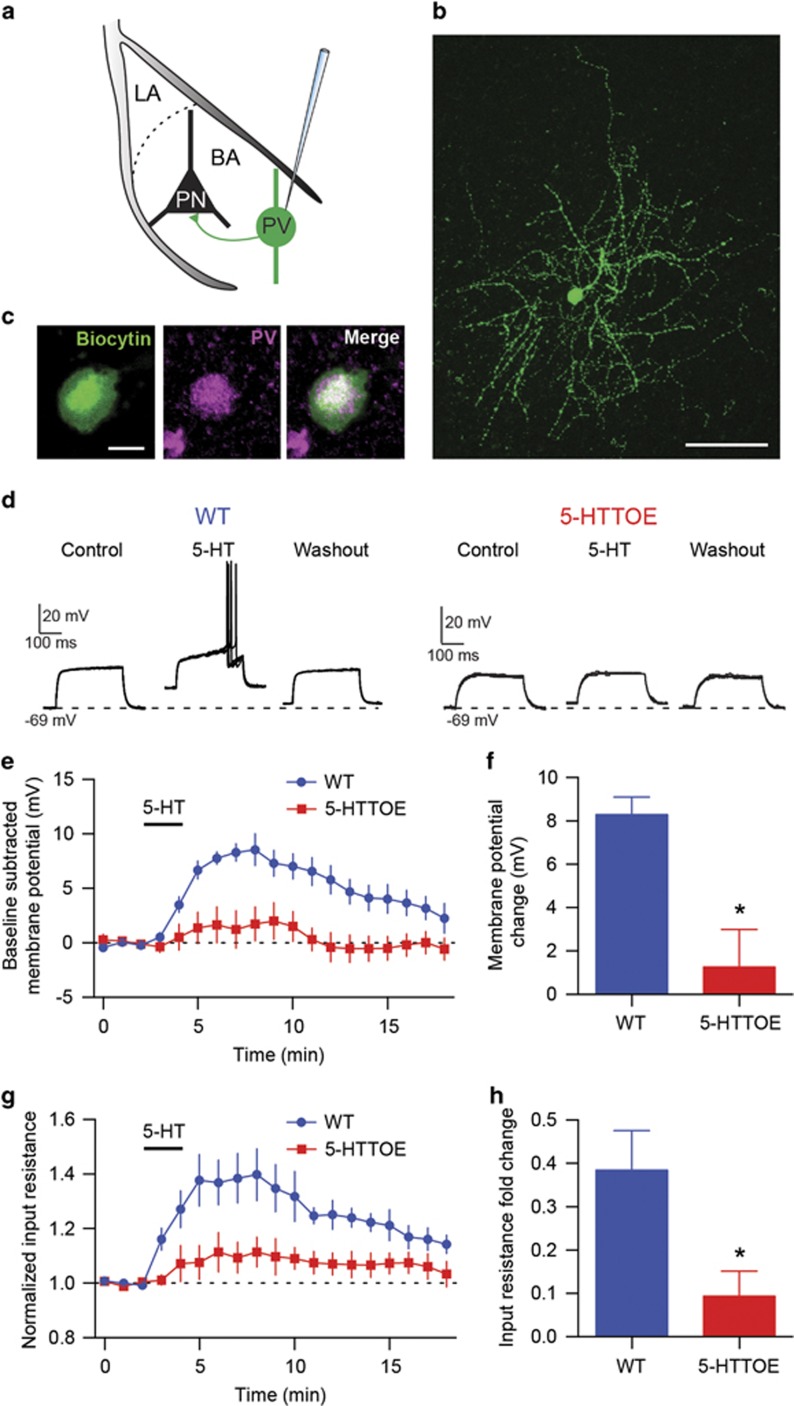Figure 2.
5-Hydroxytryptamine (5-HT)-evoked depolarization of parvalbumin-expressing interneurons (PVINs) of the basolateral amygdala (BLA) is impaired in 5-hydroxytryptamine transporter-overexpressing (5-HTTOE) mice. (a) Recording configuration and schematic connectivity between PVINs and principal neurons (PNs). (b) Representative PVIN filled with neurobiotin during recording. Scale bar: 50 μm. (c) Representative immunoreactivity for PV of a biocytin-filled neuron (same neuron as in b) (d) Five superimposed voltage responses to depolarizing current injections of representative PVINs from a WT (160 pA, 300 ms, left) and 5-HTTOE mouse (120 pA, 300 ms, right) during control, bath application of 5-HT (50 μM), and washout. In control, the current intensities used were set just below threshold to evoke an action potential. (e) Time course of the effect of 5-HT on the membrane potential of WT and 5-HTTOE PVINs. (f) 5-HTTOE PVINs (n=5 from five animals) are significantly less depolarized by 5-HT compared with WT PVINs (n=7 from six animals). (g) Time course of the effect of 5-HT on the input resistance of WT and 5-HTTOE PVINs. (h) 5-HT causes a significantly weaker increase in input resistance in 5-HTTOE compared with WT PVINs. *P<0.05. The color reproduction of this figure is available on the Neuropsychopharmacology journal online.

